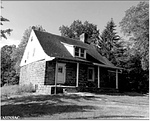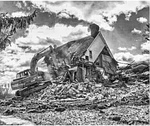Preserving Orangetown’s Past and Future
Change is inevitable, but we value our historic past in Palisades. Many people see the increasing size of homes here and the possible destruction of our historic houses as threats to the nature of the community. Last spring three local historians, Mary Cardenas, Orangetown Historian; Carol LaValle of the Tappantown Historic Society; and Alice Gerard of the Palisades Historic Committee suggested reviewing the present Orangetown Historic Law to determine if it could be strengthened against these threats.
A group including these three historians, and Andy Stewart, Orangetown Supervisor; Deputy Town Supervisor Allan Ryff; Clare Sheridan of the Rockland County Historic Society; Larry Bucchiarelli and Thano Schoppel of the Historic Areas Board of Review (HABOR), and Palisades residents Susan Nemesdy and Carol Baxter began meeting in June 2016 to discuss possible changes to the Historic Law. It has been a long, slow process, but on August 15 their suggestions for changes in two areas of the law were approved at a public hearing of the Orangetown Town Board.
The sudden destruction of the 263-year-old Lent house in 2015 was a warning that we need to do more to preserve our old houses. In the past, one could obtain a demolition permit from the Building Department, wait 90 days, and then destroy the house. The law has now been changed to add a requirement that all demolitions of houses in the Historic Districts built before 1945 be reviewed by the HABOR and be publicly announced. The purpose of these new measures is to provide more time and awareness before a demolition, hoping that in some cases alternatives to destruction might be found.
There wasn’t time to save the Lent house, but the 250-year old Seth House still exits, incorporated into a new apartment development, after years of discussions and negotiations between the owners and Orangetown Historian Mary Cardenas and others who cared about its preservation. There are also houses outside the Historic Districts in Orangetown that deserve protection because of their age or architectural distinction. The committee will continue to work on identifying and creating a list of these houses.
Changes in the regulations covering signage were also suggested and approved on August 15. These dealt with sign lighting, temporary signs, sign sizes, monument signs and lettering on windows and doors. In many cases these changes clarified the existing regulations. Enforcement of the existing regulations has been inconsistent, but this is a problem the committee cannot solve by rule changes.
Although the committee had struggled to find acceptable wording that would limit the size of large houses, their final suggestion was criticized by some Town Board members at an earlier meeting and therefore withdrawn. Instead we will have to rely on the members of HABOR to hold the line on house size. It’s important to realize that HABOR depends on people showing up at meetings to let the Board members, who work very hard to be responsive to issues, know what matters to the community. In other words, we have to work together with HABOR to preserve the past in Palisades.
The committee’s work is not finished. As well as the work of identifying noteworthy houses outside the Historic Districts discussed above it also plans to create an informational pamphlet explaining what a Historic District is and how it affects homeowners.



